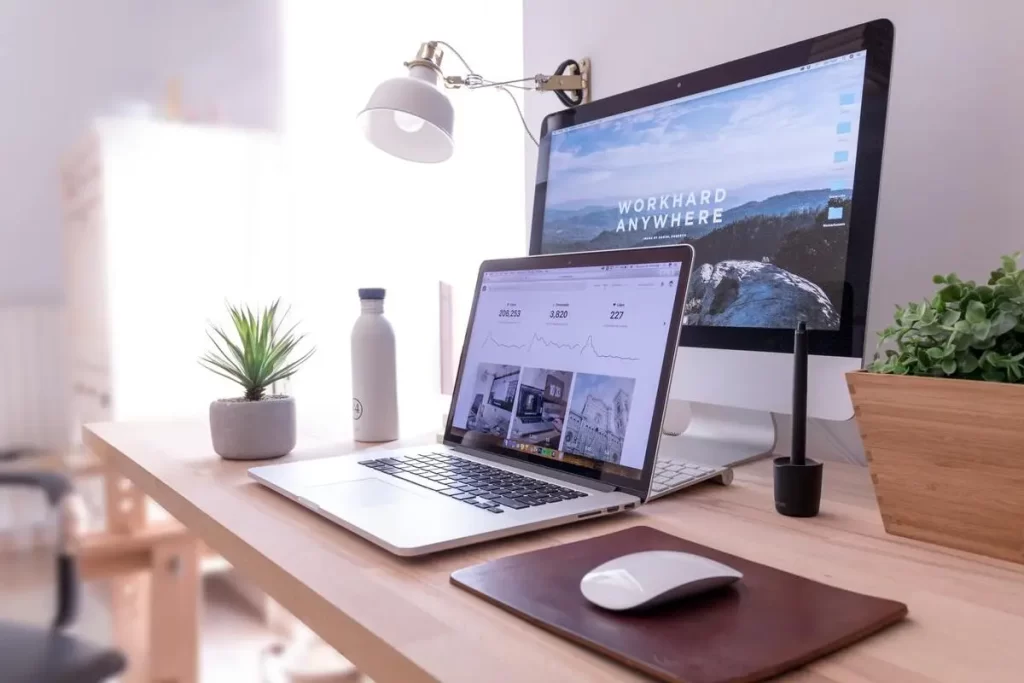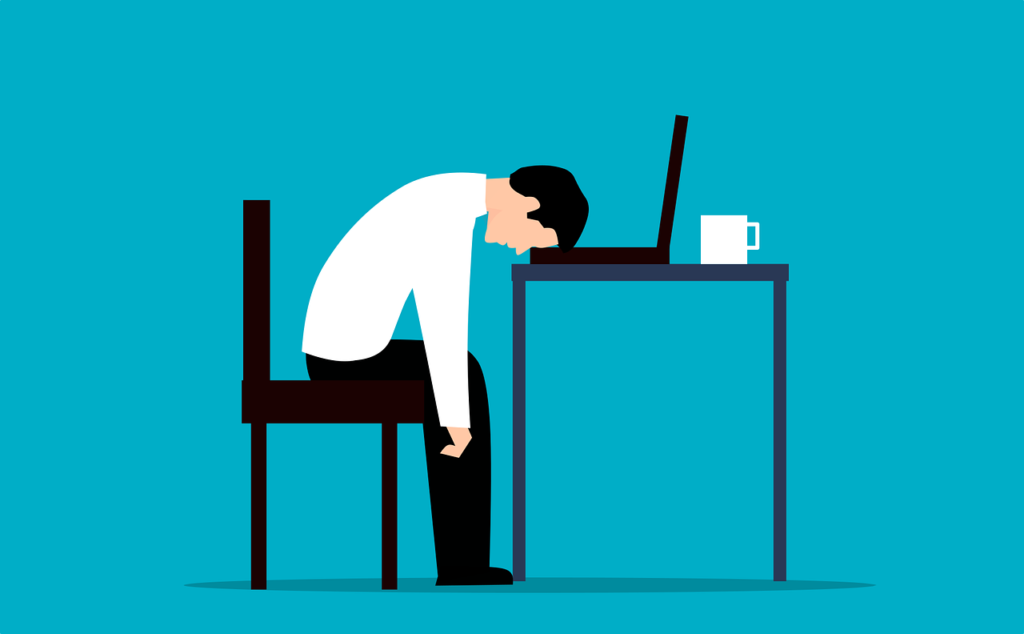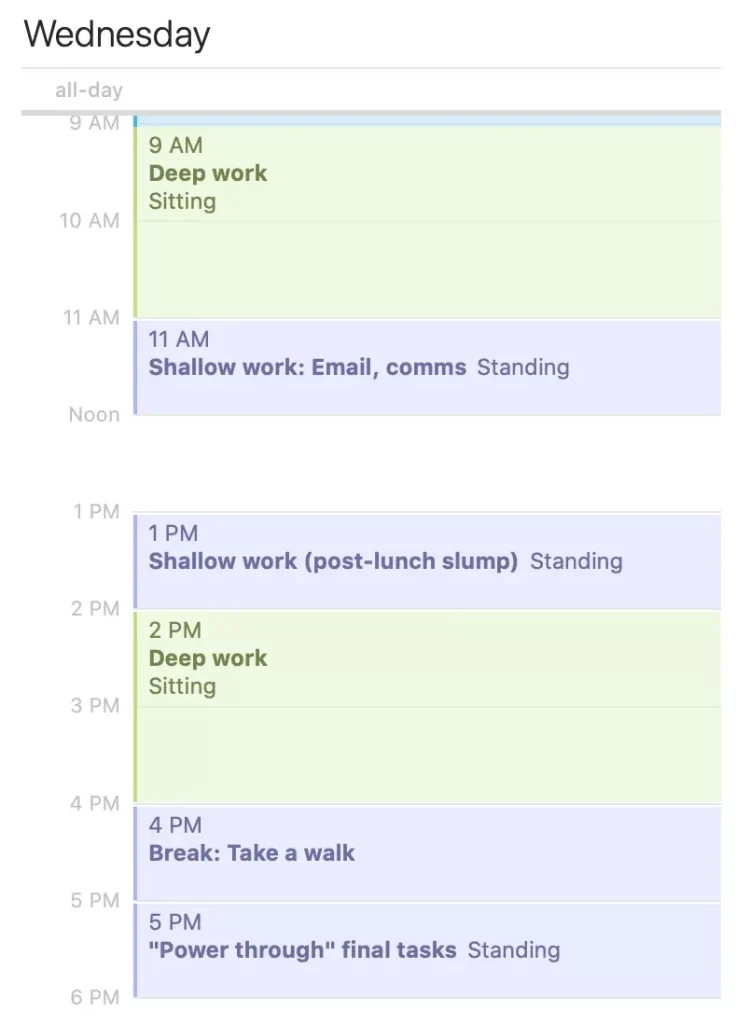
Anyone who has worked an office job knows firsthand the pains of sitting. Obviously, if you move around a lot and utilize coffee shops and co-working spaces to work, you are naturally more ‘protected’ compared to the average person. You do not have to worry too much about ‘oversitting’ on days when you are in and out for appointments.
Yet, there will be days when you are mostly seated and grinding consecutively for hours on end. These are the days when a sit-stand schedule matters the most.
Using some sort of standing desk setup alleviates pain and improves your productivity, but there comes the question of when to use it and how exactly to integrate a sit-stand schedule into your workday. Fortunately, there are numerous studies done on this.
The ideal sit-stand schedule follows a sit-stand duration that ranges from 1:1 to 3:1, so as to optimize sitting and standing for bodily comfort and productivity. Break up sitting by standing, such as alternating 30-90 min of sitting and 30 min of standing – but avoid standing beyond 4 hours a day.
But it is not easy to integrate such a sit-stand routine, and like any other muscle standing is a habit to develop.
From firsthand experience, I can tell you that it is a refreshing change and certainly a welcome break for your body when you get up on your feet, especially on those long work days.
Hours You Should Spend Standing Each Day
Note that standing does not benefit you at all times. Yes, standing at work is healthy, when it is balanced with sitting and movement. However, just as prolonged sitting is unhealthy, prolonged standing isn’t any better.
Research suggests that you should limit standing to 4 hours a day, and ideally less than that. Going beyond 6 hours is certainly ill-advised since that puts you at risk of developing health conditions such as varicose veins, sore feet, leg swelling, and low back pain.
Here are more details on why you shouldn’t go overboard with standing:
- In fact, a 12-year-long study of over 38,000 people aged 18-65 years old found that those who stand or walk for more than six hours a day at their jobs are most likely to require surgery for varicose veins, which is a condition developed from prolonged standing.
- When you stand for hours at a time, you risk developing foot, leg, and back pain, alongside more serious issues involving circulation and varicose veins.
- Based on the Prolonged Standing Strain Index developed by a study published in the International Journal of Occupational Safety and Ergonomics, it is not advisable to stand for more than four hours a day, or even stand continuously for more than an hour.
Therefore, as long as you follow the sit-stand ratio that is between 1:1 and 3:1 backed by research, and listen to the pain signals in your body, you shouldn’t have to worry about ‘excessive’ standing.
You shouldn’t need to hit a minimum duration for standing either – this would vary according to the length of your workday.
When Should You Stand At A Standing Desk?
Here are ways you can better get a sense of when you should stand, when you should sit, and how much sitting/standing is ideal for you. Ultimately, by considering these suggestions, you will successfully design some sort of sit-stand schedule in your workday.
It is up to you to decide whether to stand during designated time blocks or tasks (you could set a gentle alarm to help you build the habit), or to simply listen to your body and stand when you feel that you need to.
Ultimately you will ingrain standing at your desk as a habit that you perform on autopilot – a habit you actually enjoy.
1. Rise from your chair before you experience pain
First off, the most obvious and instinctive point is to rise from your chair when you experience discomfort. As a desk and knowledge worker, you might most typically experience pains in your lower back, neck, shoulders, and hips.
There is, of course, a whole list of short- and long-term effects on what happens to your body when you sit too much.
But it is better not to wait for pain signals to tell you to switch positions.
Seriously, do not wait. Move and change positions early, even before you register any painful sensations in your body. Switching positions early helps you to prevent the pain, rather than treat the pain.
A good starting point, if you are unsure, is to switch positions every 30 minutes or so.
Then, calibrate, and see what works best. You can be flexible about it, but just avoid staying too long in one position, be it sitting or standing.
This article was originally published on unboundist.com. If it is now published on any other site, it was done without permission from the copyright owner.
2. Stand when attention levels drop

This is one of my favorite and easiest hacks to implement, once you have some sort of standing desk put together – otherwise do check out these ideas of makeshift desks (P.S.: they could save your back right now).
Stand when your attention levels start to drop.
When you start becoming exhausted, there is a lower return on investment if you make yourself sit and push through those challenging tasks.
Instead, stand to increase your alertness instantly.
In the middle of a complex task like writing or a long project, standing helps relieve the pain from sitting, and it gives you some renewed alertness to carry on – without needing to take a break because your back hurts.
Also, if it helps with alertness and energy, you can not only stand up, but also switch to tackling the simpler daily/weekly maintenance tasks on your to-do list. Examples of such tasks are organizing your inbox, settling routine online purchases, tidying your workspace, and tackling other housekeeping items when your attention levels dip.
3. Work standing during ‘shallow’ work

Each of us has finite resources for deep work, because focused attention drops after four hours a day. Deep work, by Cal Newport’s definition, is professional activity performed in a state of distraction-free concentration that pushes your cognitive capabilities to the limit.
The challenge is that deep work requires a great deal of concentration.
It is harder to concentrate while standing, and many of us are not very used to standing unless we have used a standing desk for many months consistently.
On the other hand, there is shallow work, which refers to non-cognitive, logistical tasks. Examples are administrative tasks like scheduling meetings/events or answering emails in the late afternoons.
- Shallow work is perfectly suited to be performed at a standing desk, as these types of work do not require uninterrupted focus.
- You could power through shallow work quickly while taking a standing break, even when your mind is relatively fatigued.
Even if you do not plan your standing versus sitting work tasks to a tee, it is still beneficial to batch certain ‘shallow’ tasks together and work on them while standing, perhaps when your energy levels dip a little.
For a list of ideas, here are certain work tasks that are best suited to standing desk work, compared to more cognitively demanding tasks.
You have more urgency to get these mundane, ‘unimpressive’ tasks done more quickly when you stand.
4. Stand to power through tasks you batched together
At work, one would often have to do context or task switching. This is the jumping back and forth between tasks such as a Zoom call, your email inbox, your research material, and the Google document you have been working on.
This causes time-wasting and disrupted focus.
Instead of switching back and forth between different tasks throughout your day, you could simply batch and organize some of those tasks to be done standing, and in an urgent, shorter window of time.
When you organize and batch your tasks to be done at your standing desk (at a certain time of day), you can save ample amounts of time.
5. Stand in between periods of deep work
Another smart method to schedule standing desk hours is to stand in between two “sitting” blocks on your calendar when you are doing relatively deep work. You can have a “buffer” or break in between deep work blocks, where you can get some quick things done while standing.
In fact, you can spread your standing desk work throughout the day – 1 hour in the late morning, 1 hour in the afternoon, and 1 hour in the evening.
That totals up to 3 hours of standing, which is a nice accomplishment for the typical 8-10h workday.
Allocating standing desk hours in short blocks of time can gradually help to train your body’s capacity to stand, and thus your ability to work while standing.

6. Work standing to help you conclude your day
When you want to complete your tasks on time, the extra urgency can help. At the end of a long day, you can be sloppy and tired, so working at a standing desk can give you an extra boost.
This could help during nighttime as well.
Don’t forget this if you work throughout the night – you will likely work in-between routine, recreational tasks that involve a lot of sitting, such as dinner, watching TV or other entertainment activities in your home.
Standing for short durations at your desk during nighttime helps to counter-balance the habitual sitting during your nighttime activities.